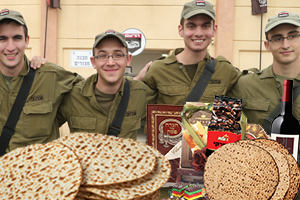
Hebron hosts the oldest Jewish community in the world and is the second holiest city in the Jewish religion after Jerusalem.
Hebron is the second holiest city in the Jewish religion. In Hebrew, the name Hebron comes from the Hebrew word Haver meaning friend, while in Arabic the city is referred to as Beit al Chalil, which translates into House of the Beloved. This name is fitting for the city, for Hebron is the resting place of all of Israel’s beloved patriarchs, as well as most of Israel’s matriarchs, and Avraham, the first Jewish patriarch, is considered a friend of G-d, the creator of the universe.
Hebron in Antiquity
Hebron is mentioned 87 times in the Tanakh or Hebrew Bible. Genesis 23 speaks about how Avraham purchased a burial tomb within Hebron for his wife Sarah. Known as the Tomb of the Patriarchs, Avraham, Yitzhak, Rivka, Ya’akov and Leah are all buried there. Rachel the wife of Ya’akov is buried in Bethlehem. Jewish tradition also maintains that Adam and Eve are buried in the same location. Hebron was also one of the first places that Israel’s patriarchs resided upon arrival in Canaan. This implies that Hebron hosts the oldest Jewish community on the planet.
Upon the conquest of Canaan, Joshua assigned Hebron to the tribe of Judah. After the death of King Saul, King David ascended to Hebron, from where he was anointed king and ruled Israel for seven years, until he succeeded to conquer Jerusalem and proclaim the holy city to be the eternal capital of the Jewish people. During Second Temple times (around 20 BCE), King Herod built a structure over the Tomb of the Patriarchs which is partially still standing to date. During the Jewish revolt against Rome (around 130 BCE), Hebron was the scene of extensive fighting between the Jewish people and the Roman authorities. However, Jews continued to live in Hebron continuously during the Byzantine and Arab periods. There is even archaeological evidence for the existence of Byzantine-era synagogues in Hebron and travelers’ reports testify to the existence of a Hebron Jewish community under Arab rule.
Hebron in the Medieval Period
However, when the Crusaders invaded the Holy Land, the ancient Jewish community of Hebron was expelled from their homes. According to Benjamin of Tuleda, who traveled to Israel in 1170, Hebron was completely destroyed due to the fighting that occurred between the Crusaders and the forces of Saladin. He describes in his book
The Travels of Benjamin, “Here is a large church, called St. Abraham; and it was, when the country was still in possession of the Ishmaelites, a Jewish Synagogue.” However, by the time of Nachmanides, 1267, some Jews were reported to have returned to Hebron. Yet in 1517, Hebron’s Jews would suffer significantly from a violent pogrom which included mass murder, rape, and the plundering of Jewish homes.
Nevertheless, by 1540, when Rabbi Jechiel Ashkenazi visited Hebron, there was a sizable community of Karaite Jews, who had their own synagogue. That same year, Sephardic Jewish exiles from Spain would immigrate to Hebron and establish the famous Avraham Avinu Synagogue, which still exists in Hebron to date. The synagogue was given this name because a legend reports that once when a minyan was lacking within the synagogue, the patriarch Avraham appeared inside the synagogue in person in order to make up for it.
Hebron in the Modern Era
In 1775, the Hebron Jewish community would suffer from a blood libel accusation, where local Jews were falsely accused of murdering a local sheikh and were forced to pay significant blood money as a result, which adversely affected the economic situation of the Hebron Jewish community. Nevertheless, throughout the Ottoman Turkish period, Jews from throughout the Diaspora and other parts of the Land of Israel would relocate to Hebron, which was one of the main centers of Jewish scholarship in Israel prior to the rise of Zionism. This ancient Jewish community would continue to exist in Hebron up until the 1929 massacre, during which sixty-seven people were murdered and the rest were forcefully expelled from the city. Jews would not be able to return to Hebron until after the 1967 war.
Presently Hebron is home to a strong Jewish community centered around the Tomb of the Patriarchs and during the time of the weekly Torah portion of Hayai Sarah, thousands of Jews make the yearly pilgrimage to Hebron in order to the be close to the resting place of Sarah the great Jewish matriarch .
Featured in: http://www.jewishpress.com/blogs/united-with-israel/jewish-history-in-a-nutshell-hebron/2013/06/03/
By Rachel Avraham, staff writer for United With Israel
Send Passover Packages to Needy Israeli Soldiers - Bring Them Joy!
We are honored to thank the young men and women of the IDF who risk their lives every day to protect the citizens of Israel. Since October 7th, soldiers have been on the battlefield for months - many are hoping to come home for Passover.
Join us in sending Passover food packages (and personal notes) to Israeli soldiers and their families.
Many soldiers spend the Passover holiday with needy families back home. The soldiers greatly appreciate your love and concern. Bring them Passover joy!
CLICK HERE TO SEND YOUR PACKAGE AND NOTE TO ISRAELI SOLDIERS!



